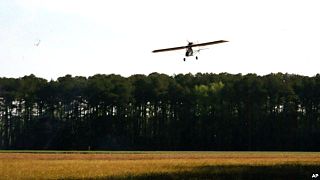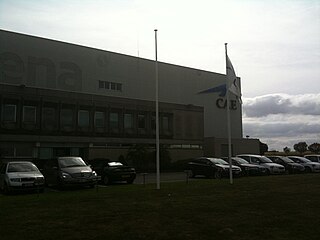Related Research Articles

Ultralight aviation is the flying of lightweight, 1- or 2-seat fixed-wing aircraft. Some countries differentiate between weight-shift control and conventional three-axis control aircraft with ailerons, elevator and rudder, calling the former "microlight" and the latter "ultralight".

Kotoka International Airport is an international airport in Accra, the capital of Ghana. The airport is operated by Ghana Airports Company Limited (GACL), which has its offices on the airport property. Until the upgrading of the Tamale and Kumasi airports to international standards, KIA, for a longtime, was the sole international airport in Ghana.

A private pilot licence (PPL) or private pilot certificate is a type of pilot licence that allows the holder to act as pilot in command of an aircraft privately. The basic licence requirements are determined by the International Civil Aviation Organization (ICAO), but implementation varies from country to country. According to ICAO, an applicant must be at least 17 years old, demonstrate appropriate knowledge and skill, and hold at least a Class 3 medical certificate. Different PPLs are available for different categories of aircraft, such as aeroplane, helicopter, airship, etc., and are not interchangeable, although experience from a PPL in one category may be credited towards the issue of another.
The airline transport pilot license (ATPL), or in the United States of America, an airline transport pilot (ATP) certificate, is the highest level of aircraft pilot certificate.
A commercial pilot licence (CPL) is a type of pilot licence that permits the holder to act as a pilot of an aircraft and be paid for their work.
Pilot licensing or certification refers to permits for operating aircraft. Flight crew licences are issued by the civil aviation authority of each country, which must establish that the holder has met minimum knowledge and experience before issuing licences. The licence, along with the required class or type rating, allows a pilot to fly aircraft registered in the licence issuing state.

Pilot certification in the United States is typically required for an individual to act as a pilot-in-command of an aircraft. It is regulated by the Federal Aviation Administration (FAA), a branch of the U.S. Department of Transportation (USDOT). A pilot may be certified under 14 Code of Federal Regulations (CFR) Part 61 or 14 CFR Part 141. Pilots may also be certified under 14 CFR Part 107 for commercial drone operations.
Pilot licensing in the United Kingdom is regulated by the Civil Aviation Authority (CAA).

The Canadian Aviation Regulations define two types of ultralight aircraft: basic ultra-light aeroplane (BULA), and advanced ultra-light aeroplane (AULA).

Wa Airport is an airport serving Wa, a city in the Upper West Region of Ghana which is also its capital. The airport is operated by Ghana Airports Company Limited. It is the fifth busiest commercial airport in Ghana with over 25,000 passengers passing through in 2022.
In Australia, pilot licences are issued by the Civil Aviation Safety Authority. Licences are issued for different categories of aircraft, including aeroplanes and helicopters.

WAASPS is a social entrepreneurship project in West Africa. Started in 2005 after 11 years of reflection and analysis of the West African market, WAASPS operate in the light aviation sector of the sub-continent.

GCAA or Ghana Civil Aviation Authority is the civil aviation authority and regulatory agency of the Republic of Ghana for air transportation in the country. It has its headquarters in Kotoka Airport in Accra.

CAE Oxford Aviation Academy Brussels - Sabena Flight Academy is an aviation training organisation created in 1953, and located in Steenokkerzeel (Belgium). The school is now part of CAE Global Academy. The training is performed in Brussels, in Mesa at CAE Oxford Aviation Academy Phoenix . Sabena Flight Academy is one of the oldest airline transport pilot schools in Europe.
The National Private Pilot Licence (NPPL) is a licence to fly United Kingdom registered aircraft within the United Kingdom. It is a more basic licence than the private pilot licence (PPL), and cannot be used to fly all aircraft. It can be used to fly basic aircraft such as vintage aircraft or kit-built aircraft. To fly many basic aircraft such as the Cessna 172, it is necessary to upgrade to at minimum a light aircraft pilot licence (LAPL).
Africa World Airlines Limited (AWA) is a Ghanaian airline company that was incorporated in 2010 and commenced flights in 2012. It has its head office in Airport City Accra, and its main hub at Kotoka International Airport in Accra.

Royal Fly-GH was a Ghanaian airline based at Kotoka International Airport in Accra. Previously using the name Fly540 Ghana, it suspended operations in May 2014. It planned to resume flights by first quarter of 2019, but did not restart operations.

Goldstar Air was a planned Ghanaian airline to be based at Kotoka International Airport in Accra. It planned to launch flights to both regional and long-haul destinations, but never commenced operations. As of 2021, the airline is no longer listed as having a valid Air Carrier License by Ghana Civil Aviation Authority.

Ho Airport is a regional airport built to serve Ho in the Volta Region of Ghana. Construction was completed in 2017, although the airport was not opened to commercial traffic until 2021.
A multi-crew pilot licence (MPL) is a pilot licence that permits an aircraft pilot to act as co-pilot of a multi-crew aircraft.
References
- ↑ "GHANA CIVIL AVIATION AUTHORITY – SAFETY AND SECURITY, OUR PRIORITY". www.gcaa.com.gh. Retrieved 2024-09-16.
- ↑ "Ghana Civil Aviation Training Academy – GHANA CIVIL AVIATION AUTHORITY". www.gcaa.com.gh. Retrieved 2024-09-16.